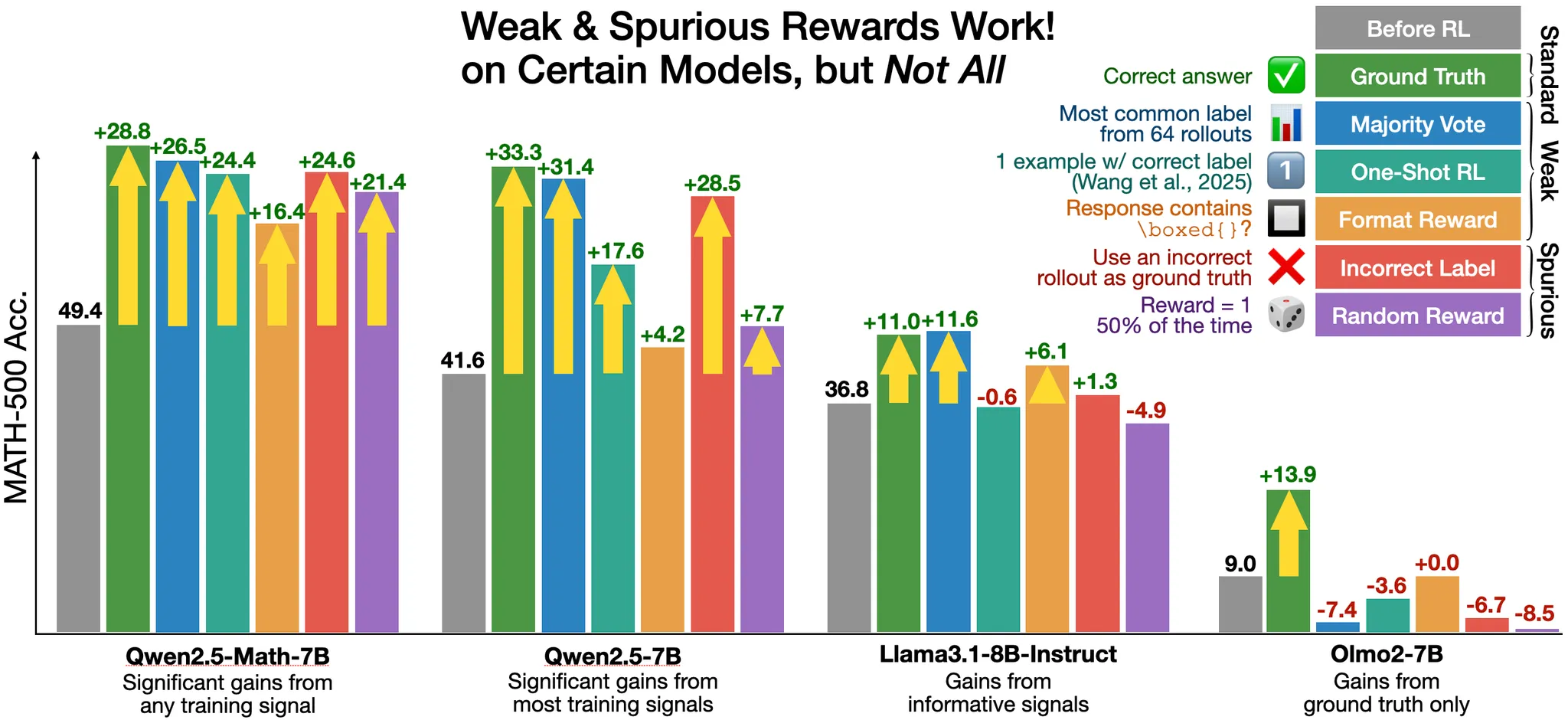Spurious Rewards: Rethinking Training Signals in RLVR
The key idea
The authors (claim to) boost significantly Qwen-Math performance via reinforcement learning (RL) with random, or even spurious, rewards on the MATH-500 benchmark. This hints at models’ already possessing reasoning abilities, which the RL procedure “coaxes out”, rather than developing.

NB. The baseline evaluations in this paper, and related ones, have been called into question. They suggest an under-reporting of ~15 percentage points (49.4% vs 64.3%) here. This is raised in a short thread on the original post on X. Still, some of the claimed gain is not absorbed by correct baseline evaluation.
With all this in mind, the claims in the current paper (outlined below), and from similar papers, should be taken with a pinch of salt.
Background
Reinforcement Learning with Verifiable Rewards (RLVR) has become a standard approach for enhancing reasoning in LLMs. The conventional wisdom that high-quality supervision signals are essential has been challenged recently, from training on only one example to training without verifiers or sampling more from the base model all improving maths capabilities.
The current paper asks and addresses the question,
“What is a minimum requirement for rewards to provide meaningful RLVR training signals? Do rewards even need to be correctly aligned?”
Their method
RLVR experiments with Qwen2.5-Math-7B, the de facto model that has been widely used by the community for reinforcement learning, were performed using different ground-truth supervision across multiple benchmarks.
Somewhat surprisingly, it is possible to almost match the ground-truth with incorrect or random rewards. This finding directly challenges the prevailing understanding of reinforcement learning’s role in improving AI reasoning capabilities.
Results
The MATH-500 benchmark is the focus. The baseline model was tested (no RLVR), alongside four RLVR approaches (including the genuine truth), with results tabulated below.
| Reward | Description | Claim | Adjusted* |
|---|---|---|---|
| Format | reward if contains \boxed{} |
+16.4% | ~0% |
| Random | uniform 0/1-valued reward | +21.4% | ~5% |
| Incorrect | reward only incorrect answers | +24.6% | ~10% |
| Truth | ground-truth reward | +28.8% | ~15% |
*“Adjusted” here is an estimation of the boost after removing ~15%, as mentioned above (and here).
Whilst none of the other options perform as well as RLVR with the true labels, random and incorrect rewards get pretty close. Interestingly, other models analysed (LLaMA 3.2B Instruct and OLMo 2 7B) did not show such gains.
Takeaways
One interpretation is that the model can already reason (fairly well), and that RLVR is more teasing out this capability, rather than improving it. This agrees with the authors’ interpretation:
“RLVR with spurious rewards can serve as a mechanism to amplify and surface useful reasoning representations learned during pre-training.”
NB. Remember, though, that the baseline evaluations have been seriously questioned. This, in turn, reduces the claimed gains, almost wiping out several of them.




Comments